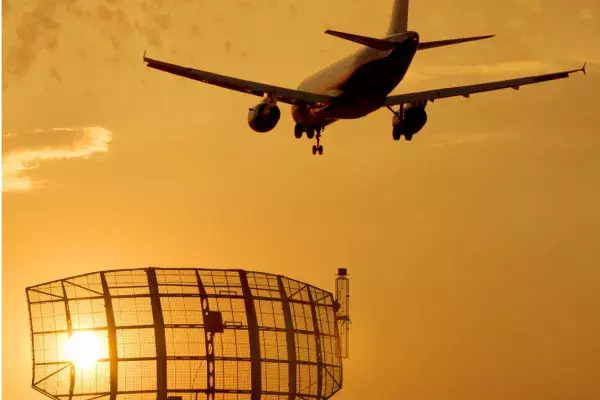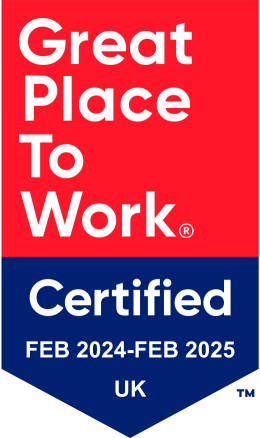03 February 2021 | Blog
How should travel companies be using hyper personalisation?
03 February 2021 | Blog
How should travel companies be using hyper personalisation?
Here at 15below, we talk about hyper-personalisation a lot: Paired with automation, it’s at the very core of everything we do. But it’s not a new concept. Google the term and you will find a lot of information about its use in the context of marketing communications, but why is it different to standard personalisation, and what does it look like when it comes to operational communications?
Personalisation + Context + Timing = HYPER-personalisation
Prove you know who you’re talking to
If you know that your passengers are VIPs, have been disrupted multiple times in the past, or are travelling with young children, your messaging needs to reflect it. Travel companies have access to more than 100 data sources that can dynamically be worked into the messaging, so there is no reason why you shouldn’t be able to talk to each passenger as an individual.
Apart from the plethora of information available in the booking, you can use loyalty details, airport facilities, ancillary products, weather, special service requirements, and more to make sure you’re giving each passenger the most relevant, helpful information that will make their journey as smooth as possible. And with 63% of consumers saying they will stop buying from brands that don’t personalise communications well, not taking advantage of the mountain of data available to you could actually drive two-thirds of your passengers away.
Here are a few examples of how you can use the data available to you to turn personalisation into hyper-personalisation during travel disruption…
URGENCY
Personalisation – 2am “Hi Emma. The time of your flight to San Francisco in 2 weeks’ time has changed.”
Hyper personalisation – 10am “Hi Emma. The time of your flight to San Francisco in 2 weeks’ time has changed.” (Note the time of sending. If you don’t need to wake them up, don’t!)
PASSENGER STATUS
Personalisation – “Hi Emma. The time of your flight to San Francisco in 2 weeks’ time has changed.”
Hyper personalisation – “Hi Emma. The time of your flight to San Francisco in 2 weeks’ time has changed. Since you’ve been a loyal customer of ours since 2012, we would like to offer you a gesture of goodwill.”
IMPACT
Personalisation – “Hi Emma. The time of your flight to San Francisco in 2 weeks’ time has changed.”
Hyper personalisation – “Hi Emma. We’re sorry to tell you that your travel plans have changed again. We know you were also impacted on DATE and would like to offer our sincere apologies for the inconvenience.”
ON-THE-GROUND FACTORS
Personalisation – “Hi Emma. The time of your flight to San Francisco today has been delayed by two hours.”
Hyper personalisation – “Hi Emma. The time of your flight to San Francisco today has been delayed by two hours. As you’re travelling with young children, you will be able to bypass all queues and take advantage of the play area in the departure lounge next to gate 12A.”
Your passengers need to know that you’re talking to them and that you’re aware of the exact scenario they currently face. The results of hyper-personalisation speak for themselves:
- JetBlue’s Net Promoter Score increased by more than 100 points to +29.8 following its implementation of hyper-personalised, automated communications.
- Our pre-departure communications generate industry-leading click-through rates as high as 71%*.
- Edelweiss generated a 100% uplift in CarTrawler bookings within one month.

The consequences of not using hyper-personalisation
While other industries can get away with mass-segmentation or generic transactional notifications, the opposite is true for travel. Pre-COVID, passengers leaving home unnecessarily, or not having the right documentation would cost a travel company in inbound calls to the contact centre, impact on reputation, and fines. But these days while all of that remains an issue, passengers not being fully informed and prepared for current mandates and requirements is a potential health risk for them and your staff. Queues, overcrowding and interactions with your staff will be significantly reduced simply because everyone knows where they need to be, when, and what they need before they get there.
And with an everchanging landscape of mandates by region/country/route/carrier, it will be impossible to keep each of your passengers up to date without dynamically pulling in data from multiple sources. Are you currently able to tell each passenger about their unique requirements with regards to the following?:
- Visas
- Travel Authorization Certificates
- COVID-19 tests and/or Health Declaration Forms
- Quarantine rules
The beauty of dynamically pulling in the relevant data from all of your sources is that you only need one template, giving you operational efficiency, guaranteed accuracy, and huge cost savings whilst also treating each passenger as an individual. You can find our best-practice guidance on this here.
To find out more about accessing more than 100 data sources, or using hyper-personalisation in your operational communications, get in touch with our passenger experience experts today.
*Fiji Airways average click-through rate – 2019




